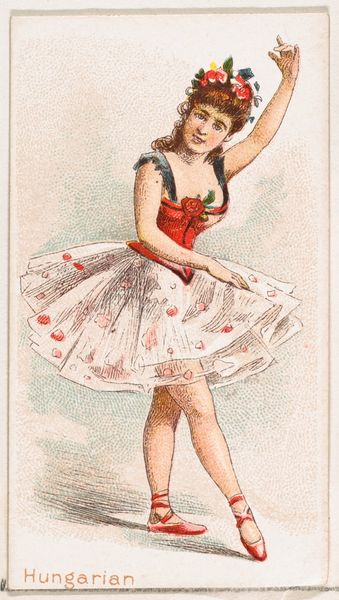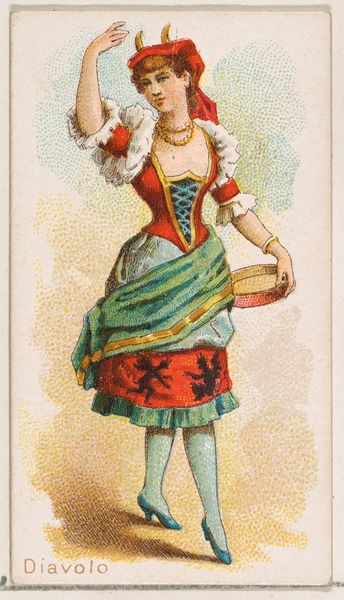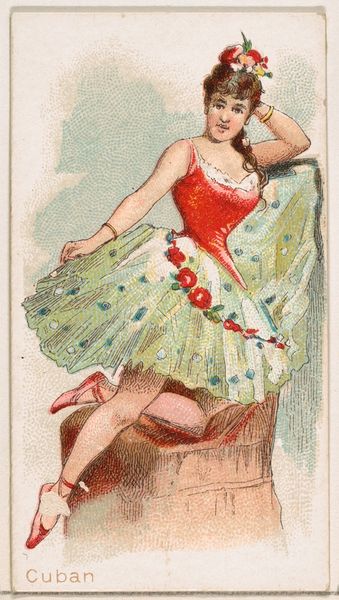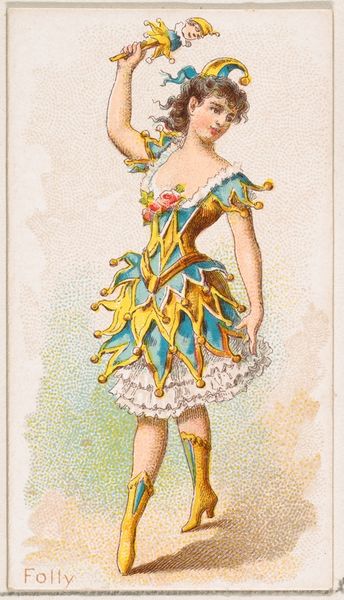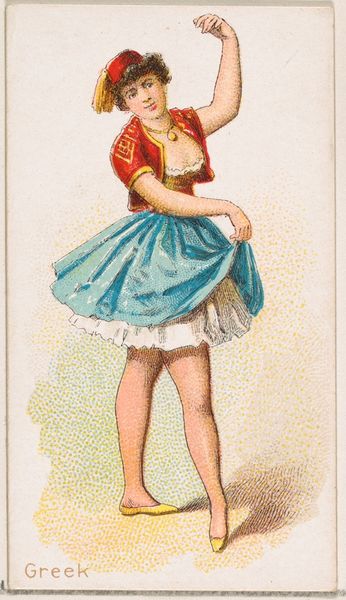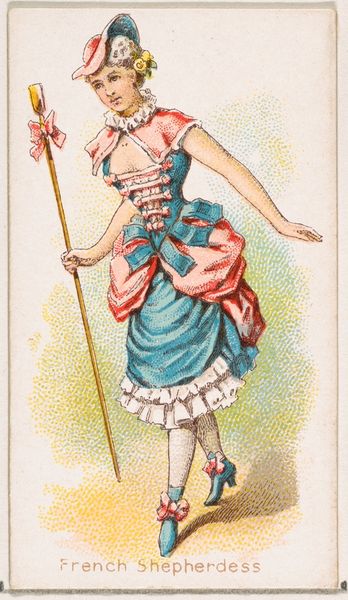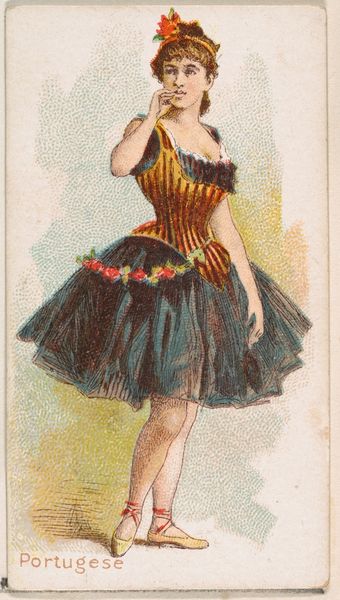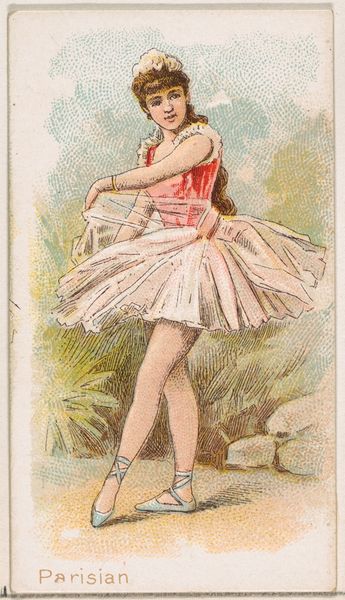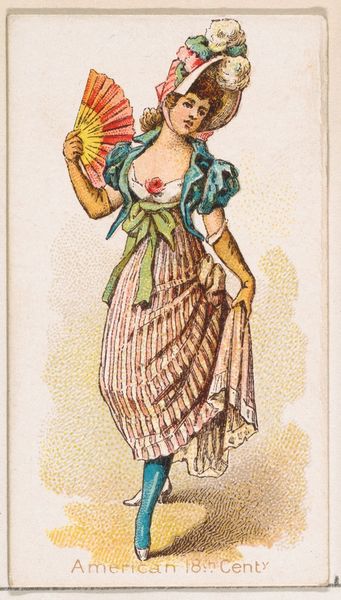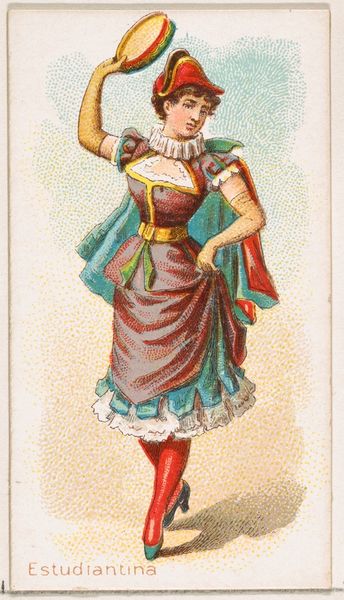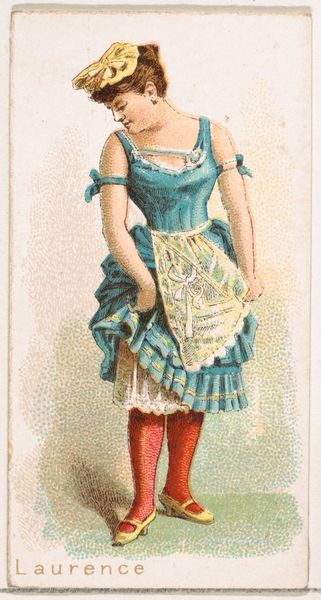
Swedish Dancer, from the Dancing Women series (N186) issued by Wm. S. Kimball & Co. 1889
0:00
0:00
Dimensions: Sheet: 2 11/16 × 1 7/16 in. (6.9 × 3.7 cm)
Copyright: Public Domain
Editor: This is "Swedish Dancer," a colored-pencil print from 1889 by Wm. S. Kimball & Co., part of the "Dancing Women" series. I find it quaint, almost like a souvenir card. The dancer seems so poised, yet the artwork itself feels mass-produced. What do you make of it? Curator: It’s interesting you pick up on that tension between artistic expression and mass production. These series of cards, distributed with tobacco products, served as both advertisements and accessible art. How does understanding its initial reception as a collectible change how you understand its artistic merit today? Editor: I guess I assumed it would have been displayed more formally. It is a portrait, but more of a genre painting, right? Thinking about it as part of a commercial product challenges that. Curator: Exactly! Consider the late 19th century’s fascination with ballet and "exotic" cultures. Series like these helped disseminate those images to a wider audience, often framing them in ways that reinforced certain cultural perceptions. Is this representation accurate or stereotypical? Editor: Stereotypical, I think. She doesn't particularly *look* Swedish; the name is more of a branding tool. Does the commercial intent negate the artistic value, then? Curator: Not at all. It complicates it. These images, while potentially reinforcing stereotypes, also introduced a generation to art and culture they might not otherwise have encountered. Think of it as a democratization, albeit one deeply entwined with capitalist motives. Does that shift your perception? Editor: It does. It's not high art, but it played a role in shaping cultural tastes, however problematic. It highlights how commercialism influences artistic representation and popular culture. Thanks for sharing this context! Curator: And thank you for pointing out that tension in the piece; it brings focus to how it circulated culturally in its own time, and invites us to reflect on the broader history of mass media and its power in popular reception.
Comments
No comments
Be the first to comment and join the conversation on the ultimate creative platform.
